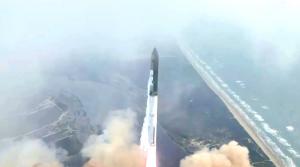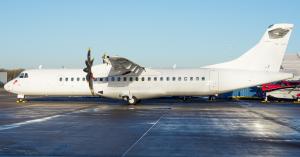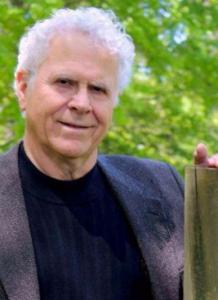Yesterday’s Test Flight Brings Frequent and Affordable Spaceflight Closer Than Ever
— Dale Skran, NSS COO/SVP
KENNEDY SPACE CENTER, FLORIDA, USA, March 15, 2024 /EINPresswire.com/ — On the morning of March 14, SpaceX conducted a third test flight of its Starship/Super Heavy launch system from Boca Chica, Texas. The enormous launcher, which is intended to be fully reusable and to fly frequently with a fast turnaround, stands taller than the Space Launch System or the retired Saturn V and has more than twice the liftoff trust of either rocket. Although all three rockets have roughly the same lift capacity to Low Earth Orbit, no part of the SLS or Saturn V was reusable, making Starship/Super Heavy much less expensive to operate.
There were a number of milestones met in this flight: a full-duration burn of the Raptor engines on both the first and second stages, successful “hot staging” (with the upper stage engines igniting while still connected to the first stage, a first for a U.S. rocket), a boost-back burn to test the Super Heavy’s ability to return to the launch site (in future flights), a test of in-space propellant transfer—critical for Starship’s use as the Artemis program’s lunar lander—and the opening and closing of Starship’s payload bay door. The last two tests were completed during the half-hour that Starship coasted above Earth, well above the Karman line, the internationally recognized boundary of space. Starship is also pioneering the routine use of methane as fuel for reusable rocket engines. Although first stage performance would have been considered a complete success for an expendable vehicle, it did not complete the second burn needed to “soft land” in the Gulf of Mexico.
Dale Skran, COO and SVP of the National Space Society said, “The never-before-seen footage of the Starship initially reentering the atmosphere was incredible. Unfortunately, Starship developed a slow roll that meant the heat shield was not in the proper position, eventually resulting in the loss of the vehicle as it descended. However, with all the progress demonstrated in this flight test, we are confident that Starship/Superheavy is on a path to enabling an amazing human future in space.” NSS CEO Anita Gale, a veteran of the space shuttle program, added, “It’s terrific to see SpaceX making more progress toward reliable Starship operations.”
SpaceX president Gwynne Shotwell tweeted shortly after the conclusion of the flight, confirming many successful outcomes: “Huge congratulations to the entire team for this incredible day … A clean [countdown] … liftoff, hot staging, Super Heavy boost-back and coast … [a] clean ship insertion and coast, payload bay door cycling and prop transfer demo (to be confirmed), and ship entry.”
The flight followed an approval from the Federal Aviation Administration, long pending, jut the day before. SpaceX hopes to speed up this process to allow for numerous additional test flights this year.
Hoyt Davidson, EVP of the NSS, noted the similarities between the Starship tests and the early Space Race: “Remember that the first crewed Mercury flight was Freedom 7. Significant progress had not been achieved until the previous uncrewed fourth flight of the Mercury system. Currently, if your spacecraft doesn’t end in a RUD [Rapid Unscheduled Disassembly, SpaceX parlance for an in-flight failure], you aren’t trying hard enough.” Rod Pyle, editor of the NSS’s magazine Ad Astra, added, “This is how SpaceX does business—they learn by pushing the envelope and by gathering data from testing. That’s how they perfected the Falcon 9 launch vehicle, which has now successfully launched 314 times with just two losses early on—a success rate of over 99 percent.”
With less than two years remaining until the planned use of a Lunar Starship to land astronauts on the Moon with the U.S. Artemis program, SpaceX hopes to step-up the cadence of its test schedule—all pending launch approvals from the FAA.
ABOUT THE NATIONAL SPACE SOCIETY
The National Space Society was founded in 1987 via a merger of the National Space Institute and the L5 Society. The NSS is the preeminent citizen’s voice on space exploration, development, and settlement. To learn more about the NSS and its mission to establish humanity as a spacefaring species, visit us on the web at space.nss.org.
Rod Pyle
National Space Society
+1 626-399-4440
email us here
Visit us on social media:
Facebook
Twitter
LinkedIn
Instagram
YouTube
![]()
Originally published at https://www.einpresswire.com/article/696137568/national-space-society-cites-third-test-of-spacex-s-starship-as-a-milestone-towards-a-spacefaring-civilization





